Indian Chicken Curry Recipe
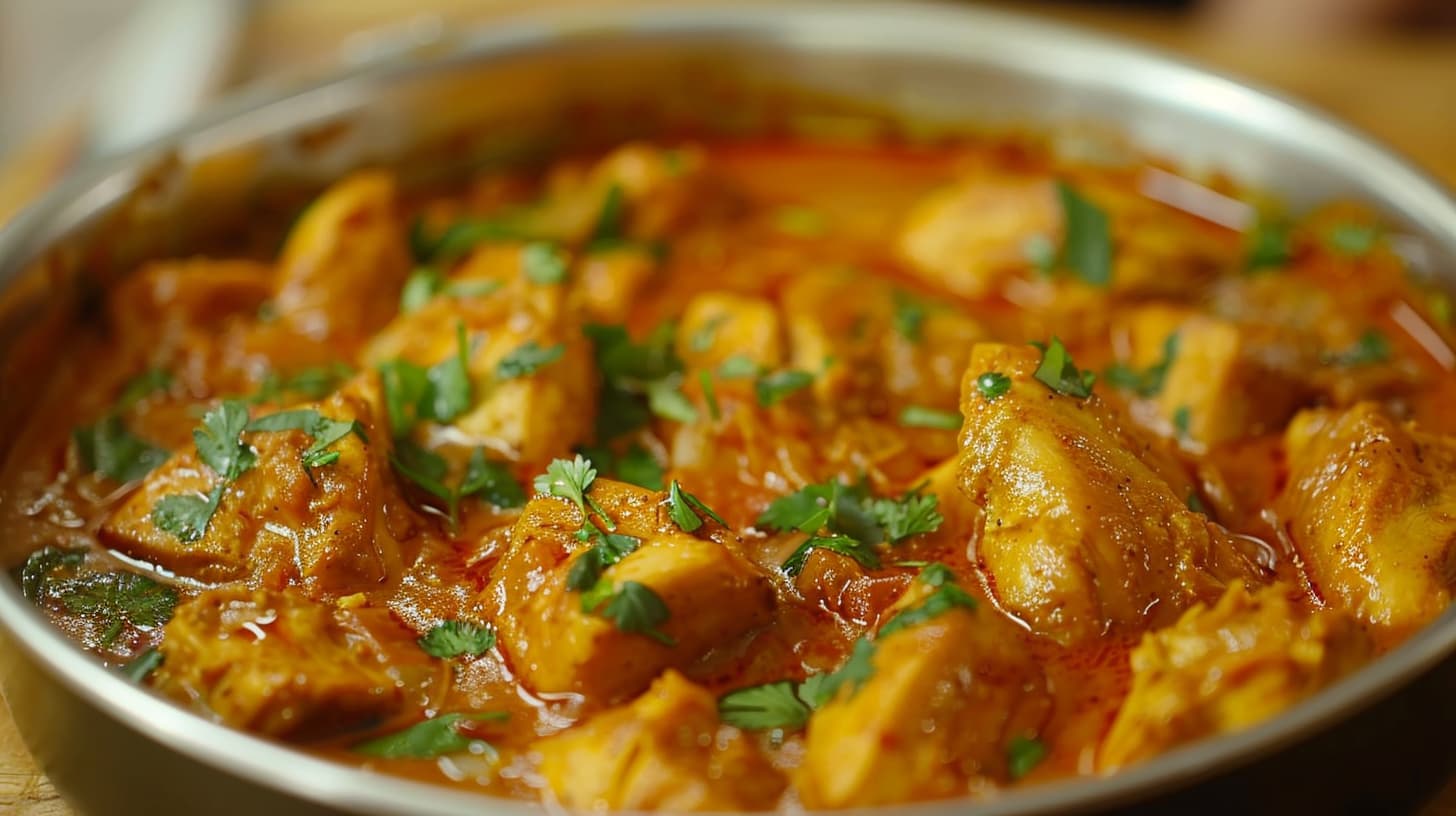
Indian Chicken Curry is a celebrated Indian recipe cherished across the globe for its rich flavors, aromatic spices, and heartwarming comfort.
In just about 45 minutes, and with simple yet robust ingredients, you can create an authentic Indian masterpiece right in your kitchen (and yes, your kitchen will smell amazing).
In this guide, you’ll learn
- Some Interesting Facts and Origin Story of Indian Chicken Curry
- How to make mouth-watering Indian Chicken Curry in your kitchen
- Healthy Vegan Alternatives For The Items Used In the Recipe
- Common Mistakes To Avoid, Pro Tips To Enhance The Taste Of the Dish
- FAQs (Reader Questions Answered) and much more stuff!
So, grab your apron, and let’s dive in!
Some Interesting Facts About Indian Chicken Curry
- In the North, you’ll find rich, creamy versions like Butter Chicken, flavored with tomatoes, butter, and cream.
- The South offers spicier variants with coconut milk and curry leaves, such as Kerala-style chicken curry.
- Eastern India enjoys a simpler, lighter version with mustard oil and poppy seeds, while the West brings the fiery heat of Goan chicken xacuti, laden with vinegar and hot spices.
- The use of spices in Indian cooking dates back over 4,000 years, with references found in ancient texts like the Vedas.
- The chicken curry as we know it today is a product of various cultural influences, including Persian and Mughal cuisines, which introduced new cooking techniques and ingredients to the Indian palate.
How to make Indian Chicken Curry At Home
Ingredients:
- 500g chicken breast, cut into bite-sized pieces (For a vegetarian option, substitute chicken with 500g of firm tofu or chickpeas for a protein-rich, plant-based alternative.)
- 2 tablespoons olive oil (A healthier option compared to traditional ghee, offering similar richness with less saturated fat.)
- 1 large onion, finely chopped
- 2 cloves of garlic, minced (Garlic is not only flavorful but also has health benefits like boosting the immune system.)
- 1-inch piece of ginger, grated
- 1 large tomato, pureed (Tomatoes are rich in vitamins C and K, potassium, and folate.)
- 2 Bay leaves
- 1/2 tsp Asafoetida powder
- 1 teaspoon turmeric powder (Turmeric is known for its anti-inflammatory properties.)
- 1 teaspoon cumin seeds (Cumin can aid digestion and improve metabolic activity.)
- 1 teaspoon coriander powder (Coriander supports digestion and adds a nutty, spicy flavor.)
- 1/2 teaspoon garam masala (A blend of ground spices that adds warmth and depth.)
- 1/2 teaspoon chili powder (Adjust according to your heat preference; chili boosts metabolism.)
- 1 cup coconut milk (A dairy-free, lactose-free alternative to cream, adding creaminess and a subtle sweetness.)
- Salt to taste
- Fresh cilantro for garnishing
- Cooked basmati rice or quinoa (for a gluten-free option) to serve
Instructions:
Marinate the Chicken:
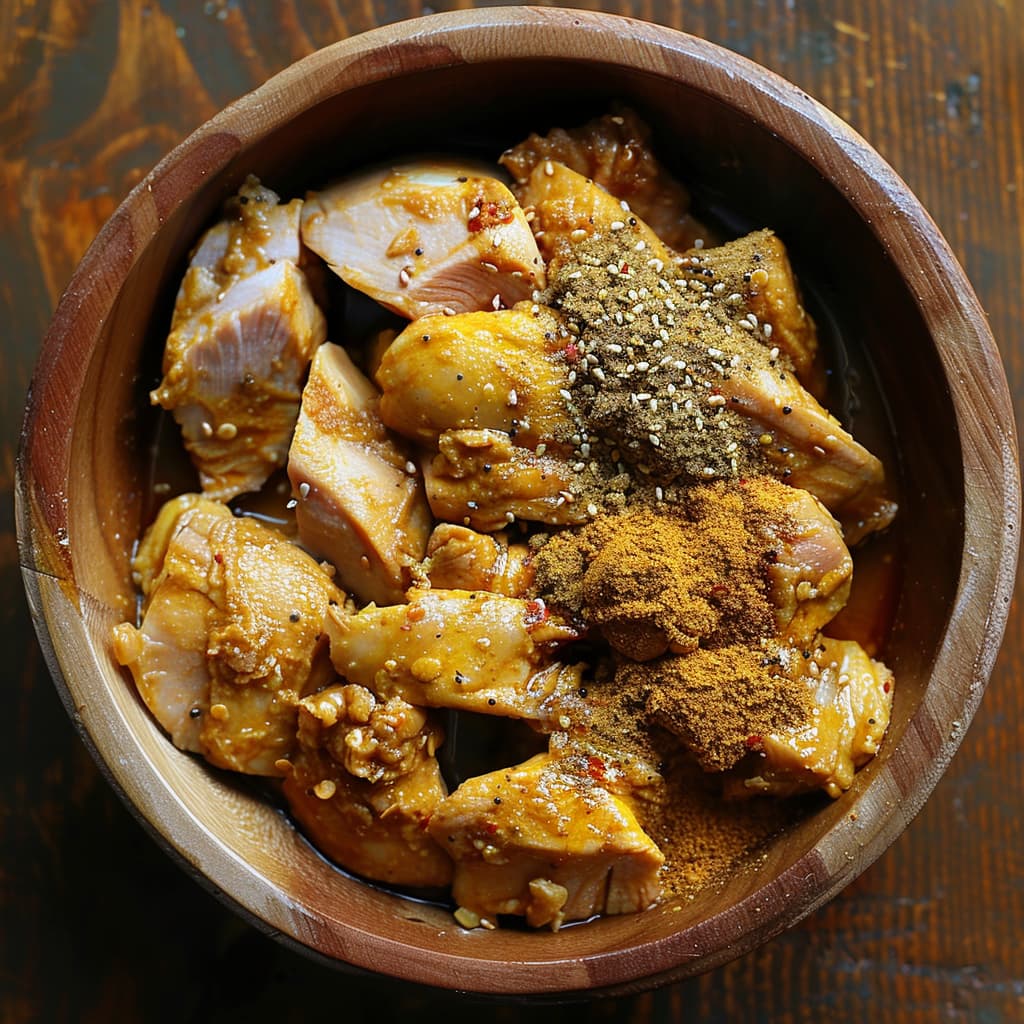
- In a bowl, combine the chicken pieces with 1/2 teaspoon turmeric, 1/2 teaspoon salt, 1/2 tsp Asafoetida powder and 1/2 teaspoon chili powder. Let it marinate for at least 30 minutes. If you’re using tofu or chickpeas, follow the same process.
Prepare the Base:
- Heat olive oil in a large pan over medium heat. Add cumin seeds and let them sizzle for a few seconds.
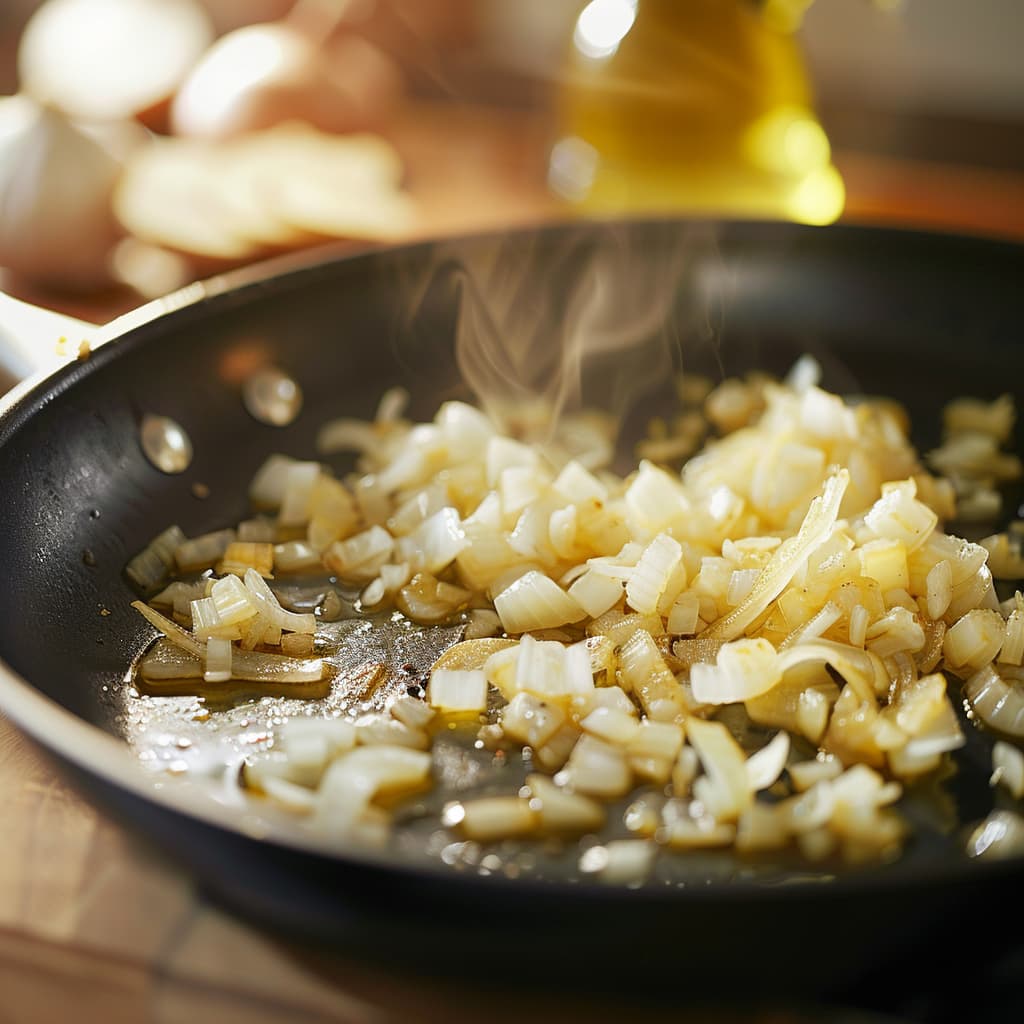
- Add the chopped onions and a pinch of salt. Cook until the onions are golden and soft. This usually takes about 5-7 minutes. Stirring occasionally will prevent them from sticking to the pan.
- Add minced garlic and grated ginger to the pan and sauté for another minute until aromatic.
Cook the Tomato Puree:
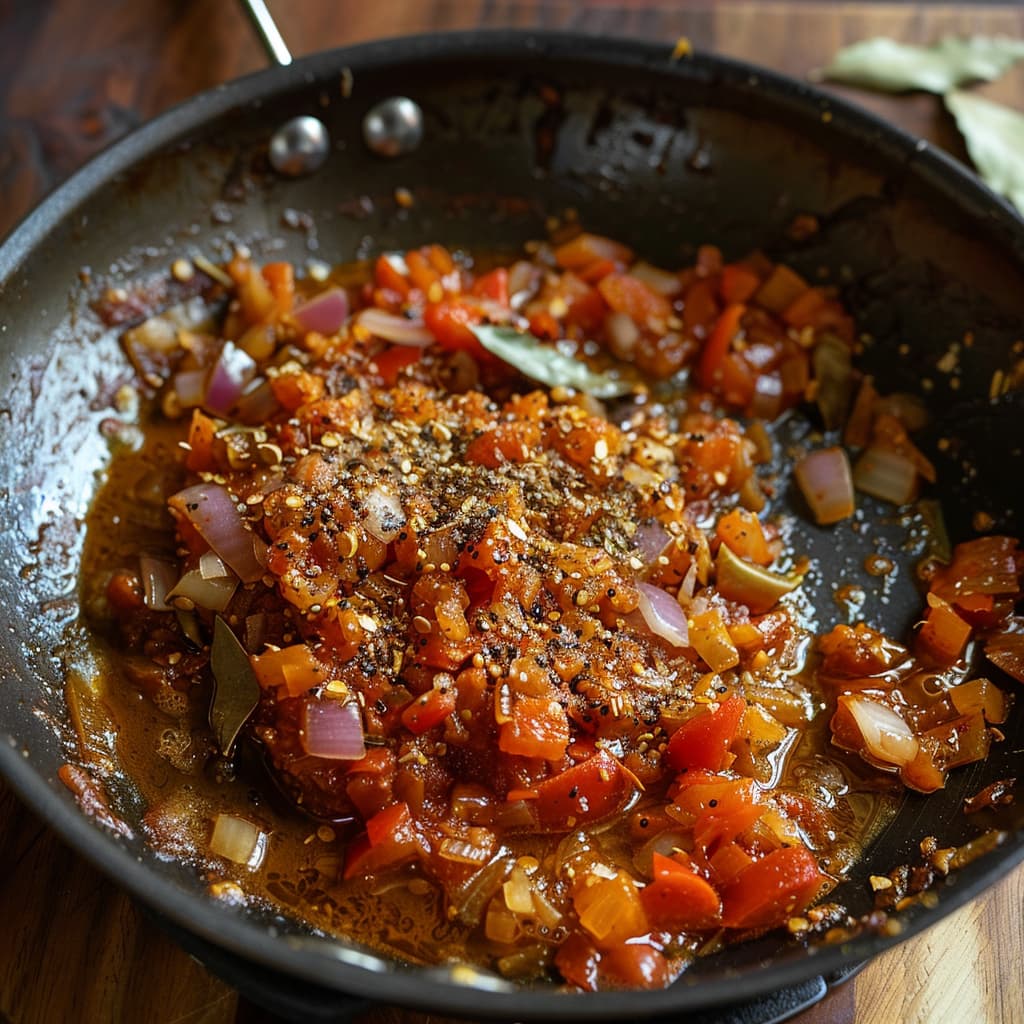
- Stir in the tomato puree, add 2 Bay leaves and the remaining spices (coriander powder, remaining turmeric, and chili powder).
- Cook until the oil starts to separate from the tomato mixture, about 3-4 minutes.
Add the Chicken (or Alternative):
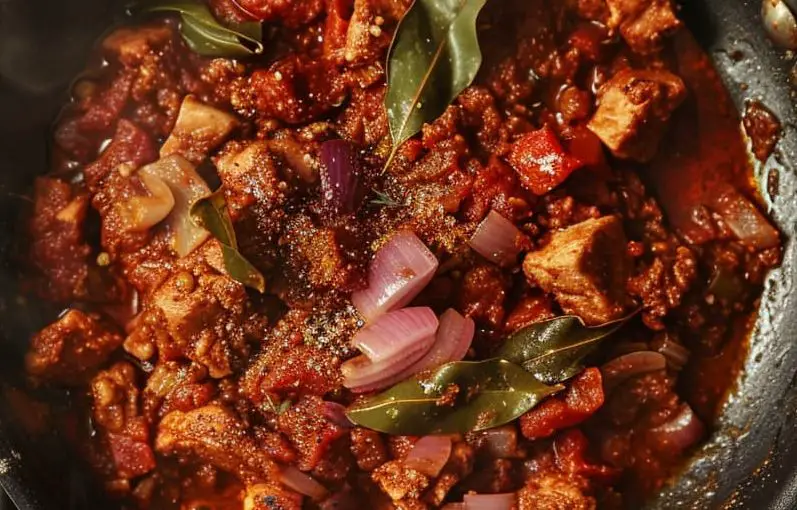
- Add the marinated chicken (or tofu/chickpeas) to the pan. Cook for 5 minutes, stirring occasionally, to ensure all sides of the chicken are seared and infused with the spices.
Simmer with Milk:
- Pour in the milk and bring the curry to a gentle simmer. Cover and let it cook for 20 minutes.
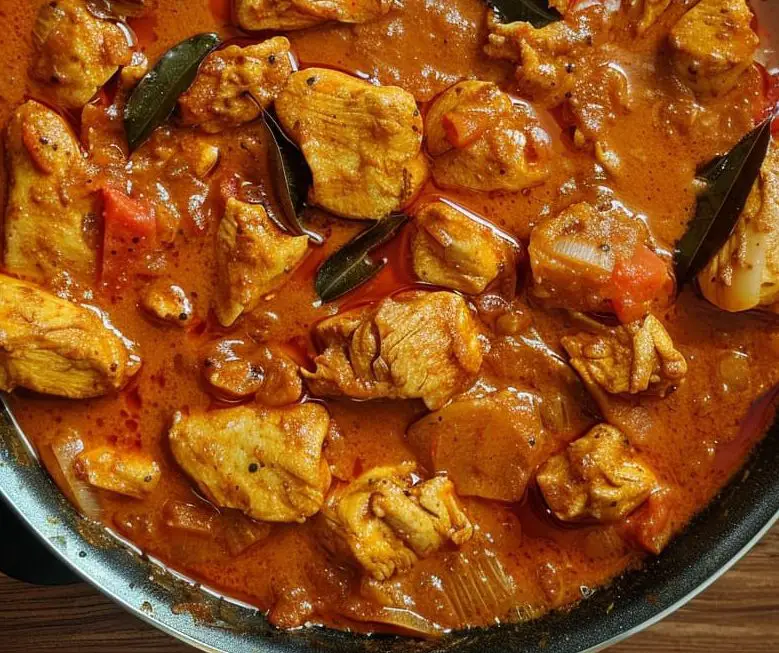
- For tofu or chickpeas, reduce the cooking time to 10 minutes to avoid over-softening.
Finishing Touches:
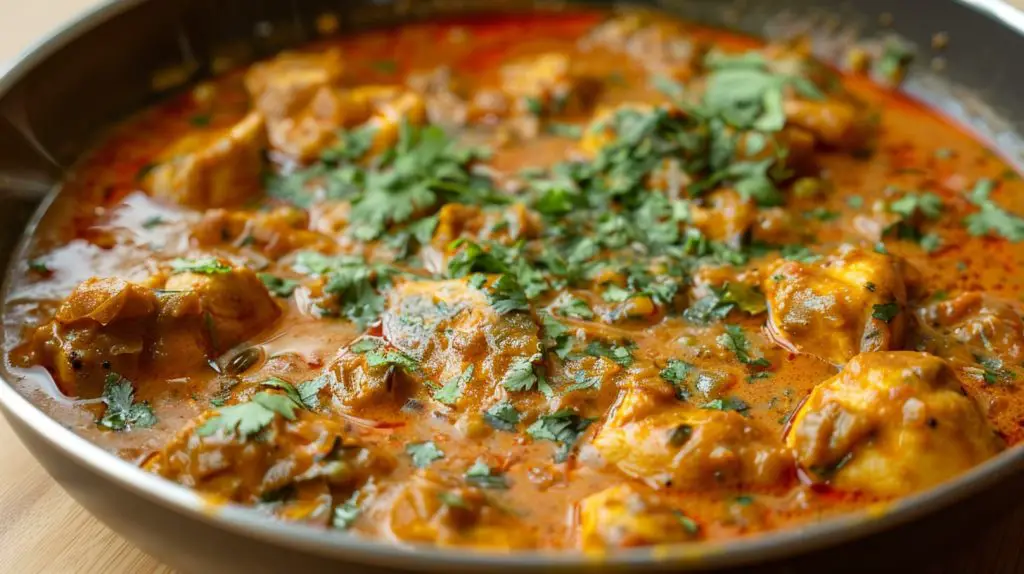
Sprinkle garam masala and adjust the salt to your taste. Let the curry simmer uncovered for another 5 minutes to thicken slightly.
Serve:
- Garnish with fresh cilantro before serving. Serve hot alongside cooked basmati rice or quinoa for a gluten-free option.
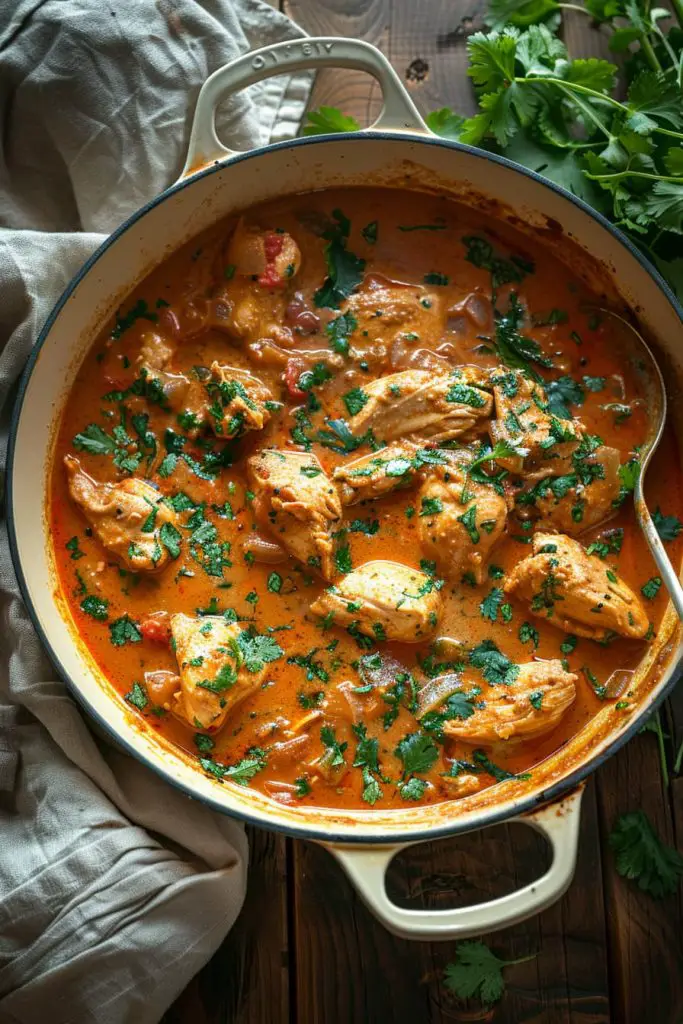
Healthy Vegan Alternatives For The Ingredients Used In the Indian Chicken Curry Recipe
- Protein Source (Chicken):
- Substitute chicken with tofu, tempeh, seitan, or your favorite plant-based meat alternative. You can also use chickpeas, lentils, or other legumes for added protein.
- Creamy Element (Coconut Milk):
- Coconut milk is a common dairy-free alternative. You can also use almond milk, cashew cream, soy milk, or oat milk for a creamy texture.
Mistakes To Avoid While Making Indian Chicken Curry
Ingredient Selection:
- Common Error: Using low-quality or stale spices. The flavor of your curry relies heavily on the freshness of the spices.
- Avoidance Tip: Always opt for whole spices that you can grind yourself. If you must use pre-ground spices, ensure they are from a reliable source and not near expiry.
- Common Error: Substituting coconut milk with dairy milk or low-fat versions. This can significantly alter the taste and texture.
- Avoidance Tip: Stick to full-fat coconut milk for the creaminess and richness it imparts to the curry.
Preparation Pitfalls:
- Common Error: Over or under-marinating the chicken. The right marination time impacts the flavor and tenderness of the chicken.
- Avoidance Tip: Marinate the chicken for at least 30 minutes, but not more than 2 hours, to ensure it absorbs the flavors without becoming too soft.
- Common Error: Rushing the onion caramelization process. The foundation of a good curry is well-caramelized onions.
- Avoidance Tip: Be patient and cook onions on a medium-low heat until they are golden brown. This can take up to 20 minutes but is crucial for developing depth in flavor.
Cooking Techniques:
- Common Error: Cooking spices briefly or not at all. Raw spices can lead to a gritty texture and uncooked flavor.
- Avoidance Tip: After adding spices to the pan, cook them for a few minutes until they release their aromas and the oil starts to separate, indicating they are well cooked.
- Common Error: High heat cooking. Curries are slow-cooked dishes that need time for flavors to meld.
- Avoidance Tip: Maintain a gentle simmer once all ingredients are added. Rushing the process on high heat can lead to undercooked ingredients and an underdeveloped flavor profile.
Seasoning and Flavoring:
- Common Error: Under or over-seasoning. Finding the right balance of spices and salt is key.
- Avoidance Tip: Start with modest amounts of spices and salt; you can always add more later. Taste as you go, especially after adding coconut milk, as it can dilute the flavors.
- Common Error: Adding fresh herbs too early. Adding herbs like cilantro too early can lead to muted flavors.
- Avoidance Tip: Garnish with fresh herbs just before serving to preserve their vibrant color and fresh taste.
Pairing Suggestions for Indian Chicken Curry
- Beverages: A cool, creamy lassi or a crisp, light beer complements the spicy and rich flavors of Indian chicken curry, balancing the heat and enhancing the dining experience. For a non-alcoholic option, try a sparkling water with a squeeze of lime to refresh the palate.
- Side Dishes: Fluffy basmati rice or warm naan bread are classic accompaniments that soak up the curry’s sauce and balance its intensity. A side of cucumber raita or a simple kachumber salad (diced cucumber, tomato, onion, and lemon juice) adds a refreshing contrast to the rich curry.
- Other Main Courses: For a more elaborate meal, pair the curry with a vegetarian dish such as dal (lentil stew) or saag paneer (spinach and cheese) to offer a variety of flavors and textures, allowing guests to explore the breadth of Indian cuisine.
Seasonal Variation for Indian Chicken Curry
- Spring: Incorporate green, spring vegetables such as peas, asparagus, or spinach into the curry to add freshness and lightness suited to the season. A squeeze of lemon juice just before serving can also brighten the dish.
- Summer: Adapt the curry for warmer months by adding tropical fruits like mango or pineapple for a sweet contrast or using lighter coconut milk to reduce its heaviness. Serve with a chilled, cucumber salad to cool the palate.
- Autumn: Introduce root vegetables such as carrots, potatoes, or sweet potatoes, which are hearty and comforting during cooler weather. A touch of cinnamon or clove in the spice mix can add a warm, autumnal flavor.
- Winter: Make the curry richer and more robust for the cold months by adding cream or butter, and use winter greens like kale or collards. A bit more heat in the form of extra chili can also provide warmth from within.
Always Keep In Mind, that the inclusion of newer veggies or spices can end up impacting the overall taste of the dish, so you may need to adjust your other spices or salt portions to counter that.
Common Problems You May Face While Cooking Indian Chicken Curry
Problem: Marinating Mishaps
- Solution: If you’re unsure about how long to marinate the chicken, aim for at least 30 minutes. If time allows, overnight in the fridge will deepen the flavors. Use a sealable bag or covered bowl, and make sure your chicken is fully coated for the best results.
Problem: Balancing Spices
- Solution: The fear of making your curry too spicy or too bland is common. Start with less than you think you need; you can always add more as you go. Remember, it’s easier to add than to subtract. Taste as you cook and adjust according to your preference.
Problem: Achieving Perfectly Cooked Chicken
- Solution: Worried about undercooked or overcooked chicken? Cut your chicken into even, bite-sized pieces to ensure uniform cooking. Keep the heat on medium and check a piece by cutting it open; it should be white all through with no pink.
Problem: Sautéing Onions
- Solution: Getting the onions right is crucial but tricky. The key is patience. Cook them slowly over medium heat, stirring occasionally. You’re aiming for a golden brown color, which could take up to 15 minutes. Don’t rush this step; it builds the foundation of your curry’s flavor.
Problem: Sauce Consistency
- Solution: If your curry seems too watery or too thick, don’t panic. For a thicker sauce, let it simmer uncovered to reduce. If it’s too thick, add a splash of water or coconut milk to loosen it up. The goal is a creamy consistency that coats the back of a spoon.
Tips for Perfecting Indian Chicken Curry
- Layer Your Spices: Start by tempering whole spices in hot oil to release their flavors before adding ground spices. This creates a depth of flavor that’s characteristic of a truly authentic Indian curry.
- Use a Heavy-Based Pan: A heavy-based pan distributes heat more evenly, preventing the spices from burning and allowing for a slow, consistent cook which is crucial for developing the curry’s complex flavors.
- Bloom the Spices: After adding ground spices, cook them until the oil begins to separate from the mixture. This process, known as “blooming,” intensifies the flavors and colors of the spices, making your curry more vibrant and tasty.
- Marinate Overnight: If time allows, marinate the chicken overnight in the fridge. The acids in the yogurt tenderize the chicken, and the longer it sits, the more flavor it will absorb.
- Finish with Freshness: Just before serving, stir in a handful of fresh coriander and a squeeze of lemon juice. These fresh elements add brightness and lift the dish, offering a counterpoint to the rich, complex curry flavors.
- Presentation Matters: Serve the curry in a pre-warmed bowl to keep it hot. Garnish with fresh herbs, and accompany with a side of lemon wedges and onion rings for an added zing and crunch, enhancing both the look and taste.
FAQs about Indian Chicken Curry (Reader Questions Answered)
What if I don’t have all the spices?
- Solution: Don’t worry! Start with what you have. The core spices are turmeric, cumin, coriander, and garam masala. You can also buy pre-mixed curry powder as a substitute in a pinch. The dish will still be delicious!
Can I use chicken thighs instead of breasts?
- Solution: Absolutely! Chicken thighs are juicier and more flavorful, making them a great choice. Just adjust the cooking time as they might take a bit longer to cook through.
The curry is too spicy; how can I fix it?
- Solution: If it’s too spicy, increase the coconut milk or add a spoonful of sugar to balance the heat. Serving it with a side of plain rice or bread also helps mellow the spices.
Can I make this curry vegetarian?
- Solution: Definitely! Swap the chicken for tofu, paneer, or a mix of your favorite vegetables. Adjust the cooking time accordingly—vegetables and paneer require less time than chicken.
How do I know when the chicken is fully cooked?
- Solution: The safest way is to use a meat thermometer; the internal temperature should reach 165°F (74°C). Otherwise, check if the chicken is no longer pink in the middle and the juices run clear.
The curry seems too watery; how can I thicken it?
- Solution: Let it simmer uncovered for a few more minutes to reduce the liquid. Alternatively, mix a teaspoon of cornstarch with a little water and stir it into the curry to thicken it quickly.
I’m allergic to coconut; what can I use instead of coconut milk?
- Solution: For a coconut-free version, you can use heavy cream, yogurt, or a non-dairy milk alternative like almond milk. Keep in mind that each option will slightly alter the flavor profile.
Can I use boneless chicken instead of bone-in?
- Absolutely! Boneless chicken, particularly thighs, is great for quicker cooking times. Just note that bone-in pieces can add more depth to the sauce’s flavor due to the marrow in the bones.
Can I add vegetables to the curry?
- Definitely! Adding vegetables like bell peppers, peas, potatoes, or carrots can make the dish more nutritious and colorful. Add them according to their cooking times to ensure they are perfectly tender.
How can I thicken my curry if it’s too watery?
- If your curry is too watery, let it simmer uncovered to reduce the liquid. Alternatively, a slurry of cornstarch and water can thicken it quickly. Add sparingly, though, as you don’t want to mask the dish’s natural flavors.
Is it better to use fresh or canned tomatoes?
- Fresh tomatoes are ideal for a brighter, more acidic flavor, especially when in season. Canned tomatoes can be a good year-round substitute, offering consistency and convenience. Just ensure to cook them down well to concentrate the flavors.
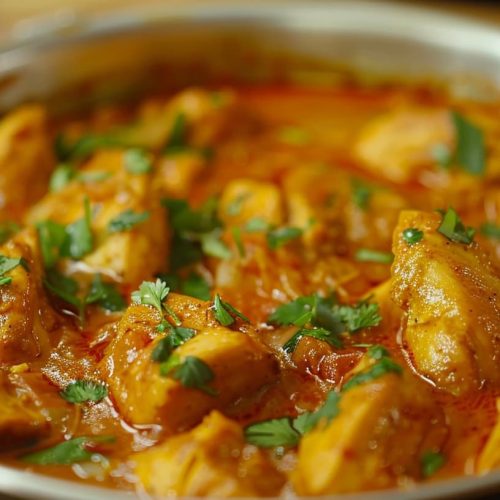
Indian Chicken Curry Recipe
Ingredients
- 500 g chicken breast cut into bite-sized pieces (For a vegetarian option, substitute chicken with 500g of firm tofu or chickpeas for a protein-rich, plant-based alternative.)
- 2 tablespoons olive oil A healthier option compared to traditional ghee, offering similar richness with less saturated fat.
- 1 large onion finely chopped
- 2 cloves of garlic minced (Garlic is not only flavorful but also has health benefits like boosting the immune system.)
- 1- inch piece of ginger grated
- 1 large tomato pureed (Tomatoes are rich in vitamins C and K, potassium, and folate.)
- 2 Bay leaves
- 1/2 tsp Asafoetida powder
- 1 teaspoon turmeric powder Turmeric is known for its anti-inflammatory properties.
- 1 teaspoon cumin seeds Cumin can aid digestion and improve metabolic activity.
- 1 teaspoon coriander powder Coriander supports digestion and adds a nutty, spicy flavor.
- 1/2 teaspoon garam masala A blend of ground spices that adds warmth and depth.
- 1/2 teaspoon chili powder Adjust according to your heat preference; chili boosts metabolism.
- 1 cup coconut milk A dairy-free, lactose-free alternative to cream, adding creaminess and a subtle sweetness.
- Salt to taste
- Fresh cilantro for garnishing
- Cooked basmati rice or quinoa for a gluten-free option to serve
Instructions
Marinate the Chicken:
- In a bowl, combine the chicken pieces with 1/2 teaspoon turmeric, 1/2 teaspoon salt, 1/2 tsp Asafoetida powder and 1/2 teaspoon chili powder. Let it marinate for at least 30 minutes. If you're using tofu or chickpeas, follow the same process.
Prepare the Base:
- Heat olive oil in a large pan over medium heat. Add cumin seeds and let them sizzle for a few seconds.
- Add the chopped onions and a pinch of salt. Cook until the onions are golden and soft. This usually takes about 5-7 minutes. Stirring occasionally will prevent them from sticking to the pan.
- Add minced garlic and grated ginger to the pan and sauté for another minute until aromatic.
Cook the Tomato Puree:
- Stir in the tomato puree, add 2 Bay leaves and the remaining spices (coriander powder, remaining turmeric, and chili powder).
- Cook until the oil starts to separate from the tomato mixture, about 3-4 minutes.
Add the Chicken (or Alternative):
- Add the marinated chicken (or tofu/chickpeas) to the pan. Cook for 5 minutes, stirring occasionally, to ensure all sides of the chicken are seared and infused with the spices.
Simmer with Milk:
- Pour in the milk and bring the curry to a gentle simmer. Cover and let it cook for 20 minutes.
- For tofu or chickpeas, reduce the cooking time to 10 minutes to avoid over-softening.
Finishing Touches:
- Sprinkle garam masala and adjust the salt to your taste. Let the curry simmer uncovered for another 5 minutes to thicken slightly.
Serve:
- Garnish with fresh cilantro before serving. Serve hot alongside cooked basmati rice or quinoa for a gluten-free option.
So that is it…Let me know in the comments below about what you think about this recipe.

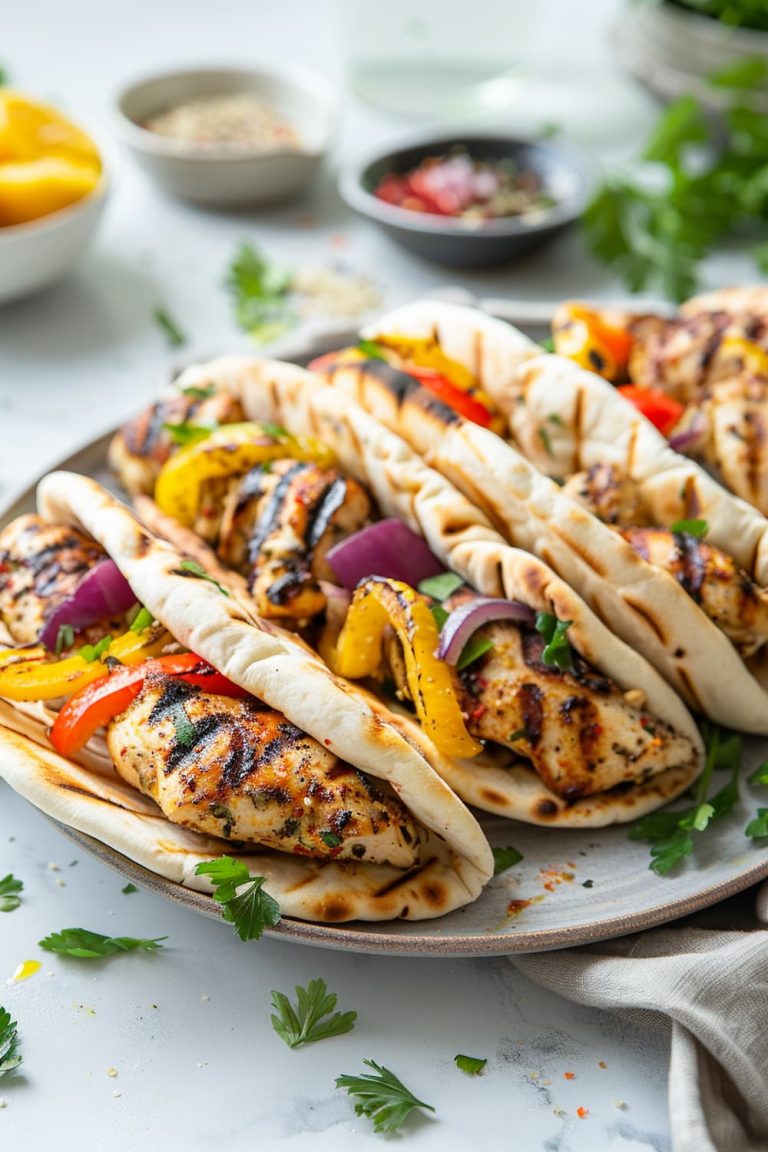
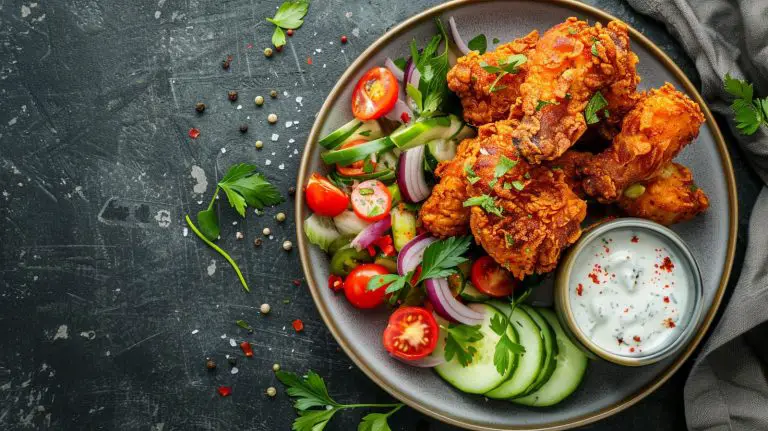
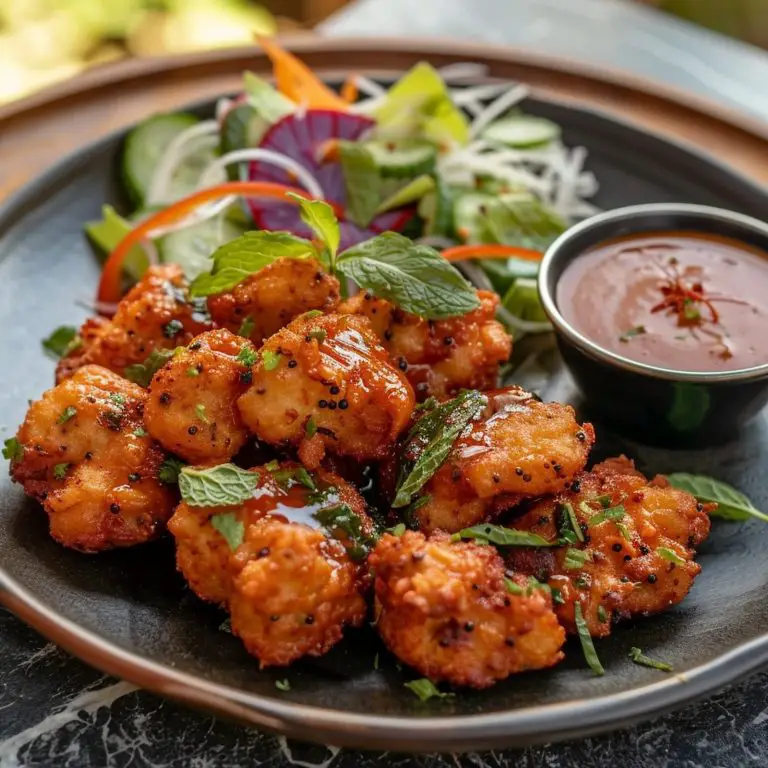
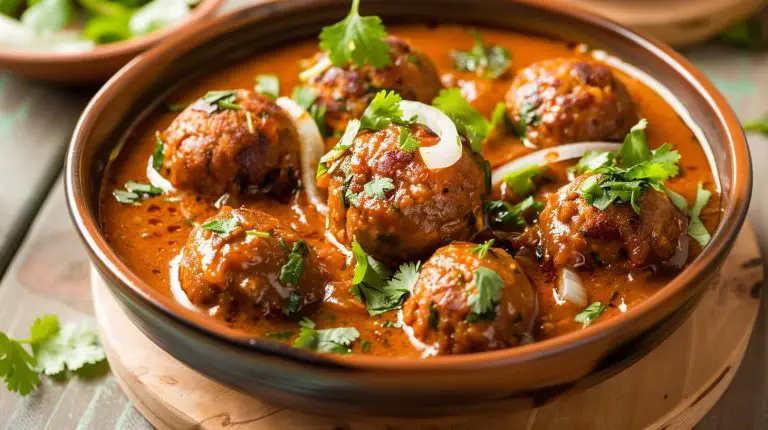
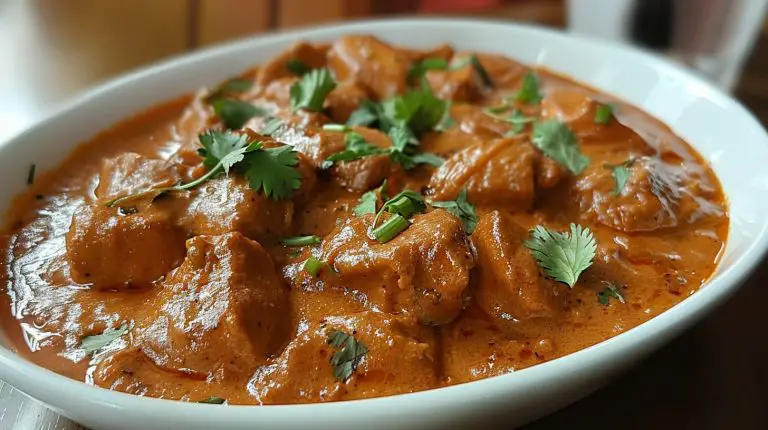
![glossy saucy consistency curry, [chili soy chicken]](https://tastycookingaroma.com/wp-content/uploads/2024/04/almostawake21_glossy_saucy_consistency_curry_chili_soy_chicke_f005f0d9-98f1-4956-8251-e7b98f5e61fc_2-768x430.jpg)